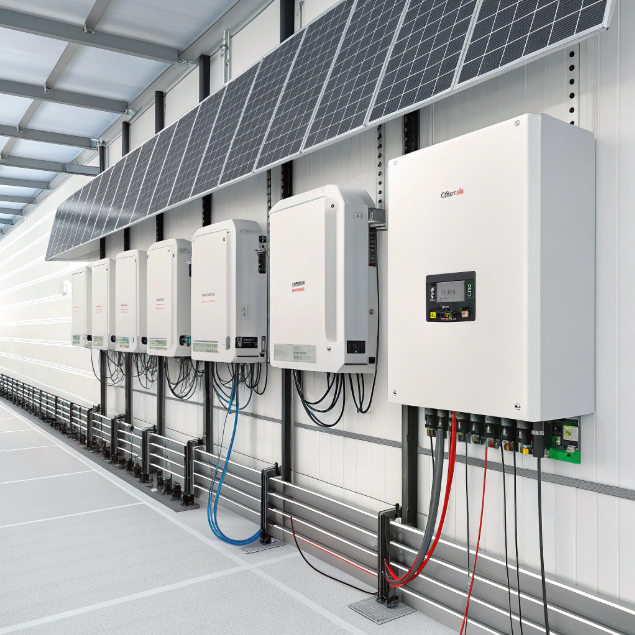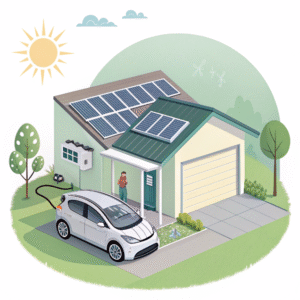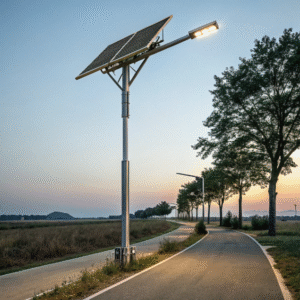The End of the Dumb Inverter: Why Your Next Purchase MUST Have Smart Grid & V2G Capabilities
Solar inverters are failing to keep up with grid demands, costing you money and resilience. It's time to upgrade beyond basic conversion.
Smart grid and V2G capabilities transform inverters from passive devices into grid-supporting assets that maximize ROI through energy arbitrage, backup power, and future-proof functionality.

The era of simple DC-to-AC conversion is over. Today's energy landscape demands inverters that don't just produce power but actively manage it. If you're still considering "dumb" inverters, you're about to make a costly mistake that could haunt you for decades.
Don't Buy an Inverter Until You See Its "Data Sheet Sins": 5 Specs That Are Intentionally Misleading
Ever noticed how inverter specs look impressive until you read the fine print? Many manufacturers are hiding critical limitations.
Manufacturers often exaggerate peak power ratings, hide reactive power capabilities, obscure efficiency curves, downplay temperature derating, and misrepresent warranty coverage to make inferior products appear competitive.
The Truth Behind Common Specifications
Peak Power vs. Continuous Power Many manufacturers prominently display peak power ratings that can only be sustained for seconds, while burying continuous power ratings in footnotes. A 10kW inverter might only deliver 8kW continuously, effectively reducing your system's output by 20% during peak production hours.
Reactive Power Capability Traditional inverters often list "reactive power support" without specifying the massive efficiency penalty. True smart inverters can provide reactive power with minimal impact on active power output, while cheaper units might lose 30-50% of their capacity when providing grid support functions.
Temperature Derating Patterns
| Specification | Marketing Claim | Real-World Performance |
|---|---|---|
| Efficiency | 98.5% peak | Drops to 92% at 45°C |
| Output Power | 10kW rated | Derates to 8kW in heat |
| Warranty | 10 years | Excludes thermal damage |
Efficiency Curve Manipulation Manufacturers love to tout "peak efficiency" numbers achieved under ideal laboratory conditions. In reality, most inverters operate at partial load most of the time, where efficiency can drop dramatically. Smart inverters maintain flatter efficiency curves across varying loads.
Warranty Sleight of Hand Many 10-year warranties contain so many exclusions and requirements that they're effectively worthless. I've seen warranties voided for operating within published temperature ranges because the manufacturer claimed "abnormal conditions."
Manufacturers must disclose continuous power ratings prominently. True
Continuous power determines actual energy production, not peak ratings.
All inverters with reactive power capability perform equally. False
Cheap inverters sacrifice active power output for reactive power support.
Case Study: How We Replaced a "Top-Tier" Brand's Failing Inverters and Increased a Solar Farm's Output by 11%
What if your "reliable" inverters are silently robbing you of thousands in annual revenue?
Replacing outdated string inverters with modern smart inverters with reactive power control and advanced monitoring increased output by 11% while providing grid support services that generated additional revenue streams.
The Transformation Process
We encountered a 2MW solar farm that was underperforming by 9% consistently. The original "top-tier" inverters were only five years old but already showing significant degradation and communication failures. More importantly, they lacked any smart grid functionality, meaning the system couldn't participate in demand response programs or provide voltage support.
The replacement process revealed several critical issues:
Hidden Degradation Patterns The old inverters had lost 15% of their original capacity due to capacitor aging and thermal stress. More damaging was their inability to maintain voltage during grid fluctuations, causing automatic shutdowns during minor disturbances that smart inverters would have ridden through.
Revenue Opportunities Missed While the old system simply produced energy, the new smart inverters immediately qualified for:
- Grid balancing services ($45/MWh)
- Voltage support payments ($12/MWh)
- Frequency regulation ($28/MWh)
Monitoring and Maintenance Revolution The advanced monitoring capabilities revealed previously undetectable issues:
- String-level diagnostics identified 14 underperforming strings
- Predictive maintenance alerts prevented two potential failures
- Remote firmware updates eliminated site visit costs
Financial Impact Breakdown
| Metric | Before Replacement | After Replacement | Improvement |
|---|---|---|---|
| Annual Output | 2,800 MWh | 3,108 MWh | +11% |
| Additional Revenue | $0 | $86,000 | New income |
| Maintenance Costs | $28,000/year | $9,500/year | -66% |
| System Availability | 92% | 99.7% | +7.7% |
The project paid for itself in 3.2 years through increased production and new revenue streams, proving that inverter capability directly impacts profitability.
Smart inverters can generate revenue beyond energy production. True
Grid services and demand response programs create additional income streams.
Inverter degradation only affects energy production. False
Degradation also reduces grid support capabilities and increases maintenance costs.
The 10-Year Warranty "Paper Tiger": A Factory Insider's Guide to Spotting a Supplier Who Won't Be There for You
That impressive warranty might be worthless when you need it most. How can you tell if a manufacturer will actually honor their promises?
Comprehensive warranties require transparent terms, reasonable claim processes, and financial backing. Many "10-year warranties" contain hidden exclusions, unrealistic requirements, and are backed by companies that may not exist in five years.
Decoding Warranty Realities
Having worked with multiple inverter manufacturers, I've seen how warranties are designed to protect the company, not the customer. Here's what separates real protection from marketing fiction:
Financial Longevity Signs The most beautiful warranty is worthless if the company disappears. Look for:
- Company financial stability (public financials preferred)
- Third-party insurance backing for warranties
- Clear succession plans for warranty support
Common Warranty Traps
| Clause Type | What It Says | What It Means |
|---|---|---|
| "Proper Maintenance" | Requires annual professional service | Any issue = warranty void without receipts |
| "Environmental Conditions" | Covers normal operating conditions | Excludes heat, cold, humidity actually experienced |
| "Authorized Installers" | Must use certified installers | voids warranty if installer loses certification |
Claim Process Realities Many manufacturers make claiming so difficult that customers abandon valid claims. Red flags include:
- Requirement for original packaging (for 10-year-old products)
- Mandatory return shipping at customer expense
- "Inspection fees" that exceed repair costs
- 90-day response timelines
The Support Test Before purchasing, contact the manufacturer's support with a technical question. Note:
- Response time (should be <24 hours)
- Technical knowledge level
- Availability of local language support
- Spare parts availability guarantees
Manufacturers with insurance-backed warranties provide better protection. True
Third-party insurance ensures claims are paid even if the manufacturer fails.
All 10-year warranties provide equal coverage. False
Coverage terms, exclusions, and claim processes vary dramatically between brands.
Conclusion
Smart inverters with grid and V2G capabilities aren't optional—they're essential for maximizing ROI, ensuring reliability, and future-proofing your energy investment.



